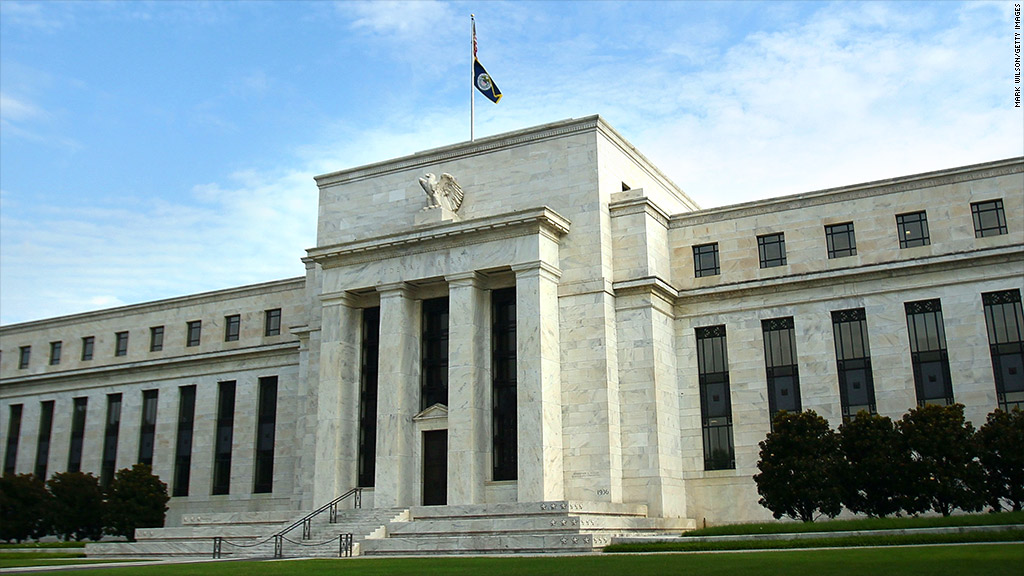Several Federal Reserve policymakers cautioned against the hasty reduction of U.S. interest rates in response to recent data revealing persistent inflation in January. The policymakers’ remarks aligned with the minutes from the Fed’s January meeting, released on Wednesday, which highlighted the majority’s concerns about the potential risks associated with a rapid rate cut. They emphasized the fear that such a move could lead to a resurgence of inflation, particularly given the unexpected persistence of high inflation in the past year.
The minutes unveiled that most central bank officials were wary of the possibility that moving too quickly to lower rates might result in a renewed surge in inflation. Notably, only “a couple” of policymakers expressed an alternative concern: that maintaining rates at elevated levels for an extended period could impede economic growth, potentially precipitating a recession. These discussions indicate the delicate balance the Federal Reserve is navigating, weighing the need to address inflationary pressures against the risk of undermining economic expansion.
Christopher Waller, a member of the Federal Reserve’s influential board of governors, delivered remarks on Thursday titled “What’s the rush?” In his speech, Waller emphasized the importance of verifying that the progress made in addressing inflationary pressures in the latter half of 2023 will continue. He argued that this necessitates a cautious approach to interest rate cuts, asserting that there is no urgency to initiate such actions at this time.
While inflation has moderated from its peak of 7.1% in 2022, as measured by the Fed’s preferred gauge, it stood at 2.6% for the entirety of 2023. Notably, in the second half of last year, prices increased at an annual rate of just 2%, aligning with the Fed’s target. However, recent data revealed an unexpected acceleration in consumer prices excluding volatile food and energy categories, marking the most rapid increase in eight months. On a year-over-year basis, these prices rose by 3.9%, consistent with the previous month’s figure.
Waller acknowledged that January’s inflation figures may be influenced by one-time factors, such as companies adjusting prices at the start of the year. However, he also raised the possibility that these data points could indicate that inflationary pressures are more persistent than previously anticipated. This cautious interpretation underscores the need for the Federal Reserve to proceed thoughtfully in its monetary policy decisions, ensuring that any actions taken are well-founded and responsive to evolving economic conditions.
Waller reiterated the uncertainty surrounding the economic trajectory, stating, “We just don’t know yet.” He stressed the need to wait longer until he is sufficiently confident that rate cuts will effectively steer the economy towards the Fed’s 2% inflation target.
While economists had previously anticipated rate cuts in May or June, Waller’s remarks may prompt a reevaluation of these expectations. In December, Fed officials had projected three quarter-point cuts to the benchmark rate throughout the year. With the current rate standing at approximately 5.4%, its highest in 22 years after rapid increases in 2022 and 2023, the timing and extent of rate cuts are under scrutiny.
Fed rate cuts typically translate to reduced borrowing costs for various sectors. Waller maintained his expectation of declining inflation and anticipated rate reductions this year. However, he acknowledged a greater risk of inflation persisting above the Fed’s 2% target than falling below it. This underscores the complex challenges facing the Federal Reserve in navigating monetary policy amidst evolving economic conditions.
With robust hiring and the economy exhibiting solid growth—3.3% at an annual rate in the final quarter of last year—Waller emphasized that the Fed has the luxury of time to deliberate on rate cuts.
Similarly, Patrick Harker, president of the Federal Reserve Bank of Philadelphia, urged caution against premature rate cuts: “I believe that we may be in the position to see the rate decrease this year. But I would caution anyone from looking for it right now and right away.”
Fed Vice Chair Philip Jefferson echoed this sentiment, warning against overly aggressive rate cuts in response to positive economic indicators. Jefferson emphasized the need to avoid excessive easing, which could hinder progress in restoring price stability.
Despite the unexpectedly high inflation figures in January, some Fed officials remain optimistic. Mary Daly, president of the San Francisco Fed, asserted that January’s inflation data has not undermined her confidence in the overall positive direction of the economy.
With robust hiring and the economy exhibiting solid growth—3.3% at an annual rate in the final quarter of last year—Waller emphasized that the Fed has the luxury of time to deliberate on rate cuts.
Similarly, Patrick Harker, president of the Federal Reserve Bank of Philadelphia, urged caution against premature rate cuts: “I believe that we may be in the position to see the rate decrease this year. But I would caution anyone from looking for it right now and right away.”
Fed Vice Chair Philip Jefferson echoed this sentiment, warning against overly aggressive rate cuts in response to positive economic indicators. Jefferson emphasized the need to avoid excessive easing, which could hinder progress in restoring price stability.
With robust hiring and the economy exhibiting solid growth—3.3% at an annual rate in the final quarter of last year—Waller emphasized that the Fed has the luxury of time to deliberate on rate cuts.
Similarly, Patrick Harker, president of the Federal Reserve Bank of Philadelphia, urged caution against premature rate cuts: “I believe that we may be in the position to see the rate decrease this year. But I would caution anyone from looking for it right now and right away.”
Fed Vice Chair Philip Jefferson echoed this sentiment, warning against overly aggressive rate cuts in response to positive economic indicators. Jefferson emphasized the need to avoid excessive easing, which could hinder progress in restoring price stability.
Despite the unexpectedly high inflation figures in January, some Fed officials remain optimistic. Mary Daly, president of the San Francisco Fed, asserted that January’s inflation data has not undermined her confidence in the overall positive direction of the economy.
